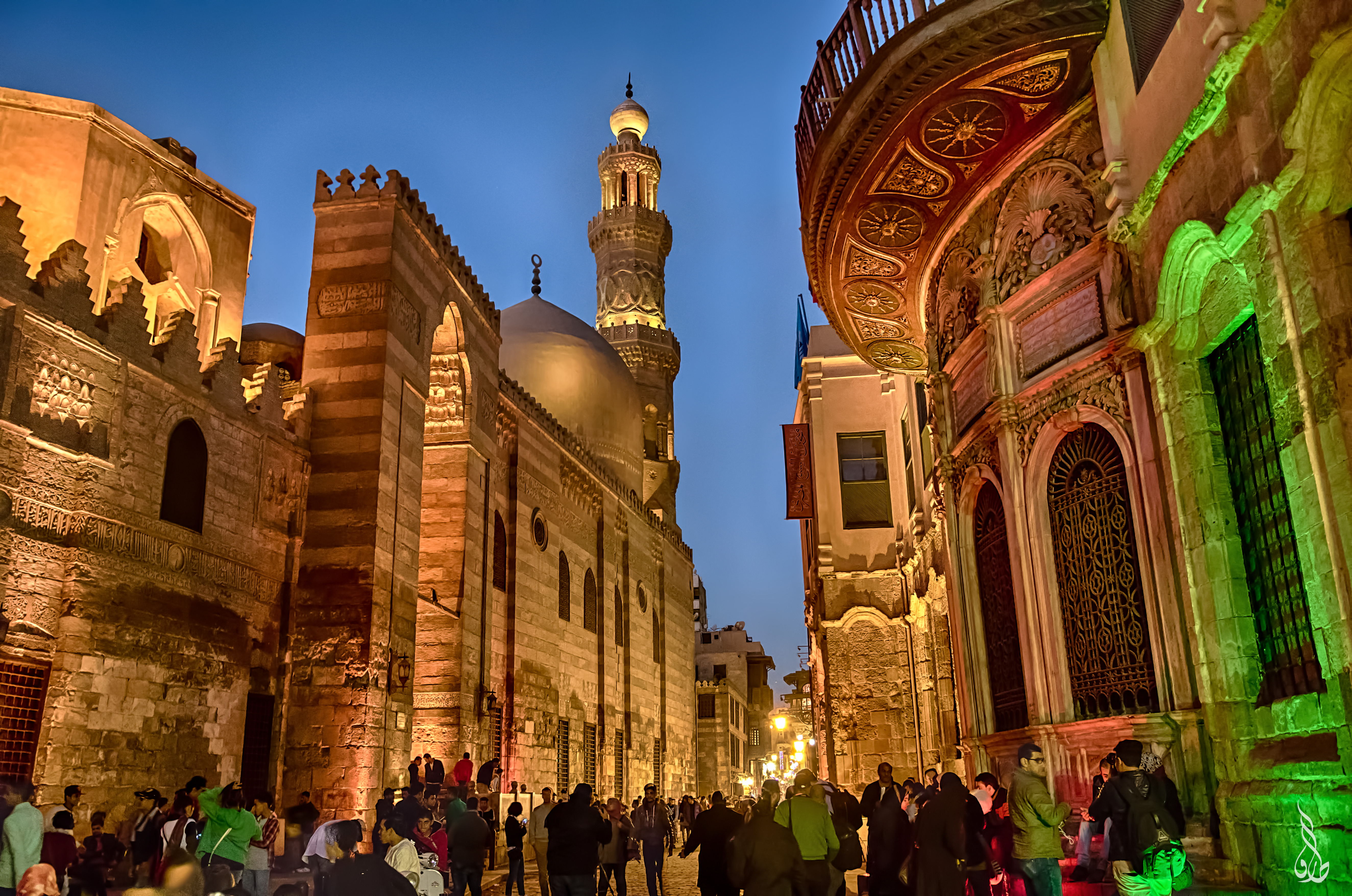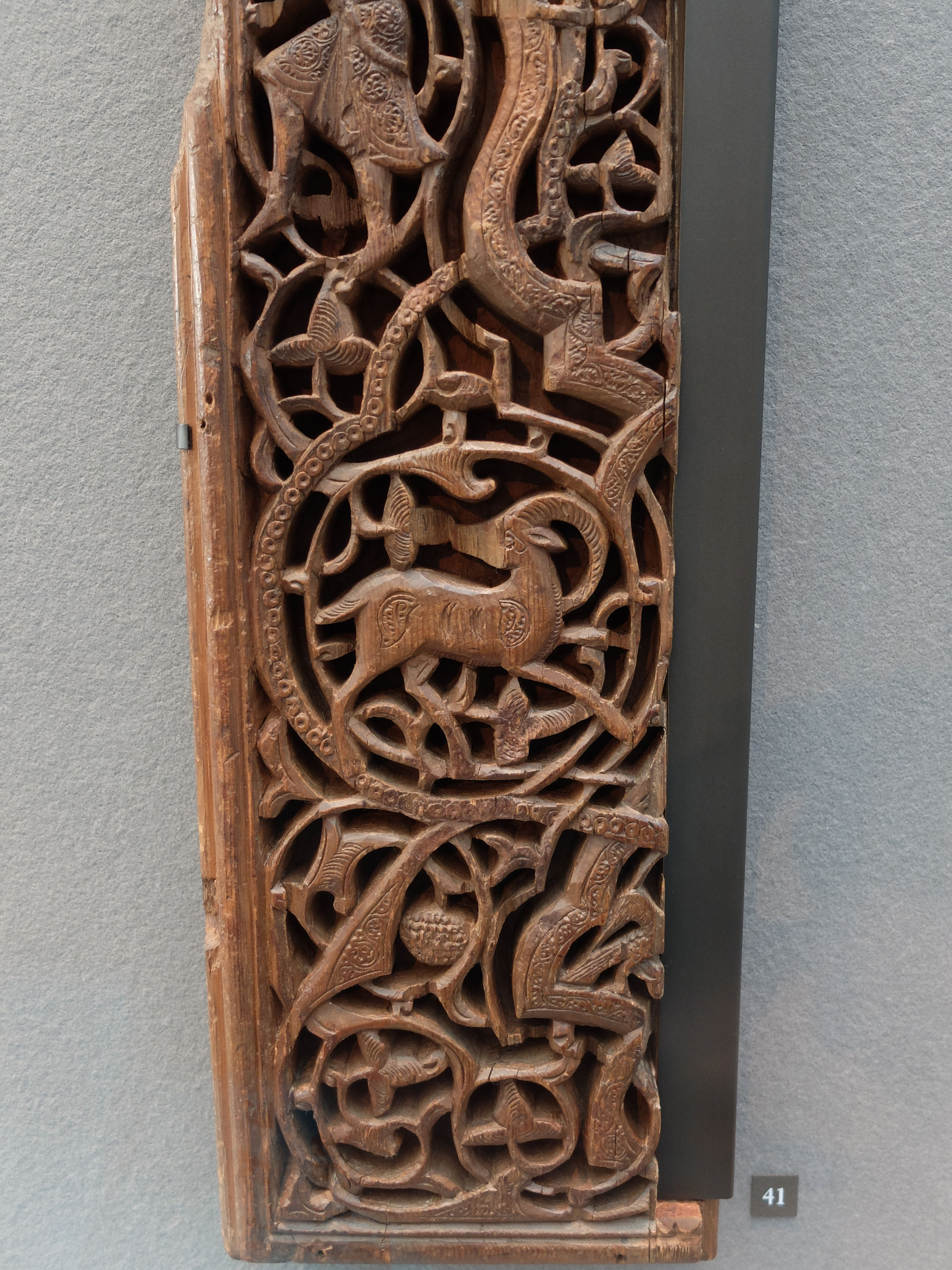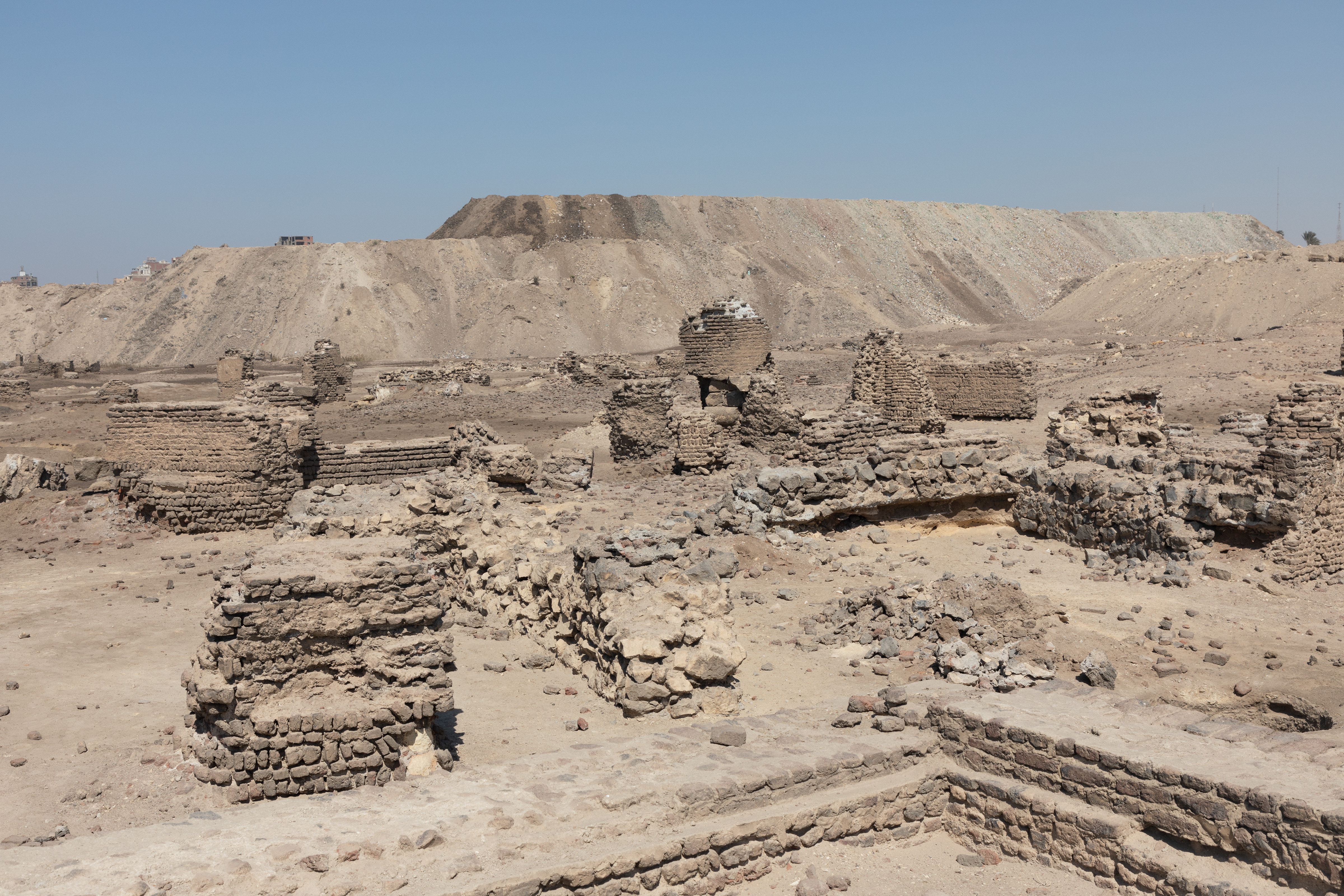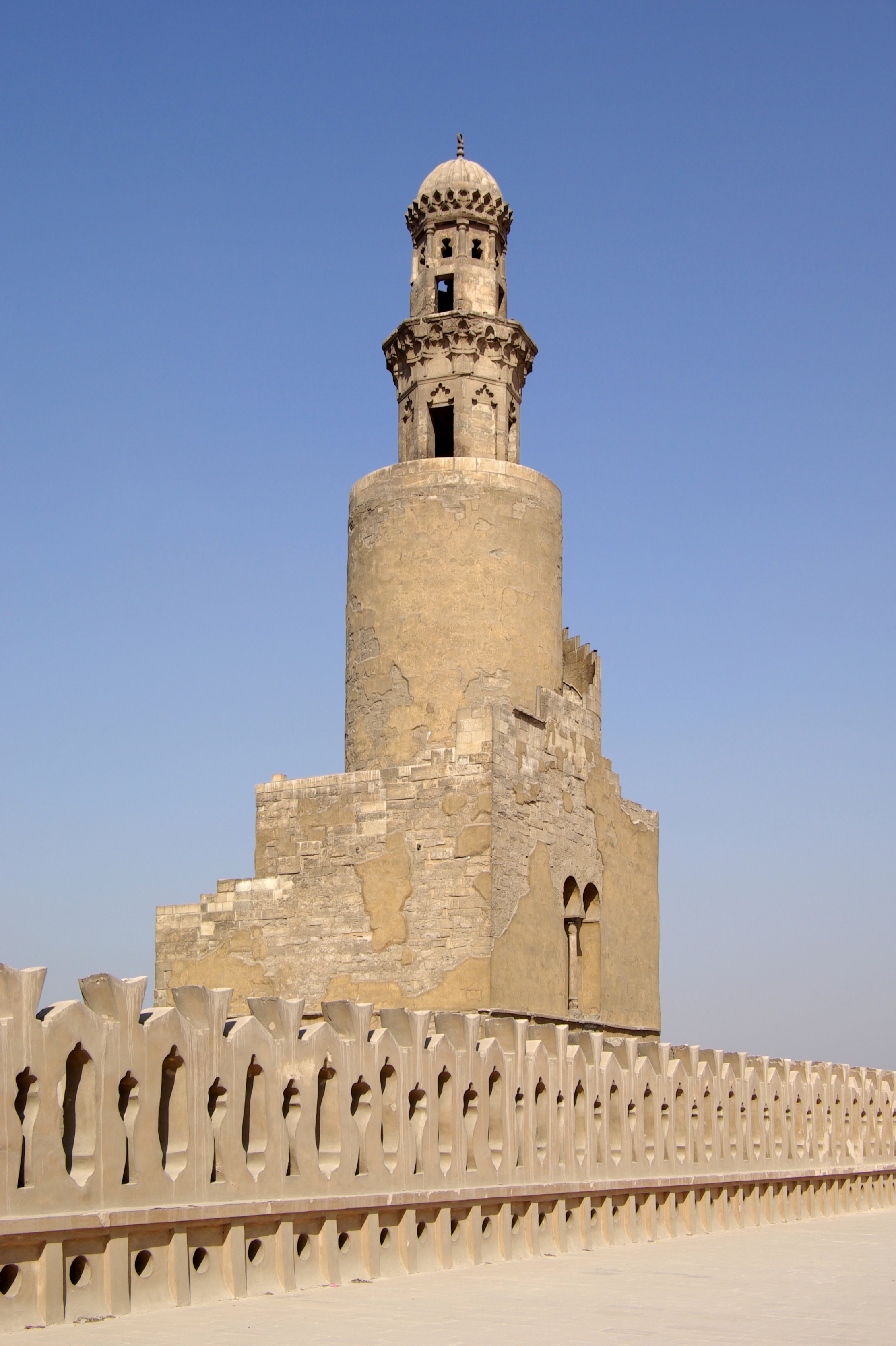|
List Of Palaces In Egypt
This is a list of existing and former palaces in Egypt across all periods, including time of the Pharaohs, the Romans, Fatimids, Mamluks, and the modern Egyptian kingdom. Pharaonic * 16th century BC palace of an unknown king, Ballas * 14th century BC palace of Amenhotep III in Malkata (or Malqata), Luxor * 1346 BC Amarna palaces of the Pharaoh Akhenaten in al-Minya * 14th century BC Amenhotep III palace at Avaris (Pi-Ramesses) in the Eastern Desert * 13th century BC palace of the Pharaoh Merenptah in Memphis, Egypt * 13th century BC palace of Rameses II, Ramesseum, Luxor * 13th century BC palace of Rameses II, Fayoum * 1175 BC The temple and palace of Rameses III at Medinet Habu * 6th century BC palace of Wahibre (Apries) in Memphis, Egypt Ptolemaic * Circa 3rd century BC - 1st century BC Palaces in the Royal Quarter of Alexandria on and to the south of Cape Lochias. * 50s BC Antirhodos island palace, was erected off of Alexandria's mainland in the Eastern Harbour (late ... [...More Info...] [...Related Items...] OR: [Wikipedia] [Google] [Baidu] |
Egypt
Egypt ( , ), officially the Arab Republic of Egypt, is a country spanning the Northeast Africa, northeast corner of Africa and Western Asia, southwest corner of Asia via the Sinai Peninsula. It is bordered by the Mediterranean Sea to northern coast of Egypt, the north, the Gaza Strip of Palestine and Israel to Egypt–Israel barrier, the northeast, the Red Sea to the east, Sudan to Egypt–Sudan border, the south, and Libya to Egypt–Libya border, the west; the Gulf of Aqaba in the northeast separates Egypt from Jordan and Saudi Arabia. Cairo is the capital, list of cities and towns in Egypt, largest city, and leading cultural center, while Alexandria is the second-largest city and an important hub of industry and tourism. With over 109 million inhabitants, Egypt is the List of African countries by population, third-most populous country in Africa and List of countries and dependencies by population, 15th-most populated in the world. Egypt has one of the longest histories o ... [...More Info...] [...Related Items...] OR: [Wikipedia] [Google] [Baidu] |
Rameses II
Ramesses II (sometimes written Ramses or Rameses) (; , , ; ), commonly known as Ramesses the Great, was an Egyptian pharaoh. He was the third ruler of the Nineteenth Dynasty. Along with Thutmose III of the Eighteenth Dynasty, he is often regarded as the greatest, most celebrated, and most powerful pharaoh of the New Kingdom, which itself was the most powerful period of ancient Egypt. He is also widely considered one of ancient Egypt's most successful warrior pharaohs, conducting no fewer than 15 military campaigns, all resulting in victories, excluding the Battle of Kadesh, generally considered a stalemate. In ancient Greek sources, he is called Ozymandias, derived from the first part of his Egyptian-language regnal name: . Ramesses was also referred to as the "Great Ancestor" by successor pharaohs and the Egyptian people. For the early part of his reign, he focused on building cities, temples, and monuments. After establishing the city of Pi-Ramesses in the Nile Delta, h ... [...More Info...] [...Related Items...] OR: [Wikipedia] [Google] [Baidu] |
Bayn Al-Qasrayn
Bayn al-Qasrayn () is an area located along al-Mu'izz Street in the center of medieval Islamic Cairo, within present day Cairo, Egypt. It corresponds to what was formerly a plaza between two palace complexes constructed in the 10th century by the Fatimids, as part of their palace-city named (now Cairo). This later became the site of many monumental buildings constructed during the Ayyubid, Mamluk, and Ottoman periods, up to the 19th century. Many of these historical monuments are still standing today. History Fatimid founding The Fatimids conquered Egypt in 969 under the command of al-Siqilli, the general of Caliph Al-Mu'izz li-Din Allah. In 970, Jawhar was responsible for planning, founding, and constructing a new city to serve as the residence and center of power for the Fatimid Caliphs. The city was located northeast of Fustat, the existing capital and main city of Egypt. Jawhar, who served as al-Mu'izz's Grand Vizier and was most likely an Armenian slave, is recounted ... [...More Info...] [...Related Items...] OR: [Wikipedia] [Google] [Baidu] |
Fatimid Great Palaces
The Great Palaces of the Fatimid Caliphs (or Great Fatimid Palaces, among other name variants) were a vast and lavish palace complex built in the late 10th century in Cairo, Egypt, to house the Fatimid Caliphate, Fatimid caliphs, their households, and the administration of their state. There were two main palace complexes, the Eastern and the Western Palace. They were located in the center of the walled city of Cairo around the area still known today as Bayn al-Qasrayn ("Between the Two Palaces"). Overview and background The Fatimid Caliphate, Fatimids were a Shia Islam, Shia Islam, Muslim Caliphate that initially controlled Ifriqiya, where they founded their first capital at Mahdia. They then Fatimid conquest of Egypt, conquered Egypt in 969 Common Era, CE with a North African Kutama Berbers, Berber army under the command of the general Jawhar al-Siqilli. In 970, Jawhar was responsible for planning, founding, and constructing a new city to serve as the residence and center of po ... [...More Info...] [...Related Items...] OR: [Wikipedia] [Google] [Baidu] |
Old Cairo
Old Cairo (, Egyptian pronunciation: Maṣr El-ʾAdīma) is a historic area in Cairo, Egypt, which includes the site of a Babylon Fortress, Roman-era fortress, the Christian settlement of Coptic Cairo, and the Muslim-era settlement of Fustat that pre-dates the founding of Cairo proper in 969 AD. It is part of what is referred to as Historic Cairo, a UNESCO World Heritage Site. ''Miṣr al-Qadīma'' is also a modern administrative district in the Southern Area of Cairo, encompassing the area from the Cairo Citadel Aqueduct, Cairo Aqueduct to the north, to the Ring Road (Cairo), Ring Road in the south, and from the City of the Dead (Cairo), Khalifa cemetery to the east, to the Nile Corniche in the west, as well as Roda Island, or Manial al-Roda. It had 250,313 residents according to the 2017 census. History Roman fort and Coptic Cairo The area around present-day Cairo had long been a focal point of Ancient Egypt due to its strategic location at the junction of the Nile Valley and ... [...More Info...] [...Related Items...] OR: [Wikipedia] [Google] [Baidu] |
Al-Qatta'i
Al-Qaṭāʾi () was the short-lived Tulunid capital of Egypt, founded by Ahmad ibn Tulun in the year 868 CE. Al-Qata'i was located immediately to the northeast of the previous capital, al-Askar, which in turn was adjacent to the settlement of Fustat. All three settlements were later incorporated into the city of Cairo, founded by the Fatimids in 969 CE. The city was razed in the early 10th century CE, and the only surviving structure is the Mosque of Ibn Tulun. History Each of the new cities was founded with a change in the governance of the Middle East: Fustat was the first Arab settlement in Egypt, founded by Amr ibn al-A'as in 642 following the Arab conquest of Egypt. Al-Askar succeeded Fustat as capital of Egypt after the move of the caliphate from the Umayyad dynasty in Damascus to the Abbasids in Baghdad around 750 CE. Al-Qata'i ("The Quarters") was established by Ahmad ibn Tulun when he was sent to Egypt by the Abbasid caliph to assume the governorship in 868 CE. Ibn ... [...More Info...] [...Related Items...] OR: [Wikipedia] [Google] [Baidu] |
Ahmad Ibn Tulun
Ahmad ibn Tulun (; c. 20 September 835 – 10 May 884) was the founder of the Tulunid dynasty that ruled Egypt in the Middle Ages, Egypt and Bilad al-Sham, Syria between 868 and 905. Originally a Turkic peoples, Turkic slave-soldier, in 868 Ibn Tulun was sent to Egypt as governor by the Abbasid caliph. Within four years he had established himself as a virtually independent ruler by evicting the caliphal fiscal agent, Abu'l-Hasan Ahmad ibn Muhammad ibn Abdallah ibn al-Mudabbir, Ibn al-Mudabbir, taking over control of Egypt's finances, and establishing a large military force personally loyal to himself. This process was facilitated by the volatile political situation in the Abbasid court and the preoccupation of the Abbasid regent, al-Muwaffaq, with the wars against the Persian Saffarids and the Zanj Rebellion. Ibn Tulun also established an efficient administration in Egypt. After reforms to the tax system, repairs to the irrigation system, and other measures, the annual tax yield g ... [...More Info...] [...Related Items...] OR: [Wikipedia] [Google] [Baidu] |
Bahariya Oasis
Bahariya Oasis (, "the Northern Oases") is a depression and a naturally rich oasis in the Western Desert of Egypt. It is approximately 370 km away from Cairo. The roughly oval valley extends from northeast to southwest, has a length of 94 km, a maximum width of 42 km and covers an area of about 2000 km2. The valley is surrounded by mountains and has numerous springs. Located in Giza Governorate, the main economic sectors are agriculture, iron ore mining, and tourism. The main agricultural products are guavas, mangos, dates, and olives. Names In Ancient Egypt, the oasis had two names. The name 'ḏsḏs' (''Djesdjes'') is first mentioned on a scarab dating back to the Middle Kingdom. In the New Kingdom, this name is rarely found, although it does appear for example in the Temple of Luxor and in the account of King Kamose, who occupied the oasis during the war against the Hyksos. From the 25th Dynasty it was almost the only name used. Another name ''wḥꜣt ... [...More Info...] [...Related Items...] OR: [Wikipedia] [Google] [Baidu] |
Antirhodos
Antirhodos (sometimes Antirrhodos or Anti Rhodes) was an island in the eastern harbor of Alexandria, Egypt, on which a Ptolemaic Egyptian palace was sited. The island was occupied until the reigns of Septimius Severus and Caracalla and it probably sank in the 4th century, when it succumbed to earthquakes and a tsunami following an earthquake in the eastern Mediterranean near Crete in the year 365. The site now lies underwater, near the seafront of modern Alexandria, at a depth of approximately . Descriptions of the island were recorded in classical antiquity by Greek geographers and historians. Strabo described a royal house on Antirhodos in 27 BC and wrote that the island's name ("counter-Rhodes") derived from the island's rivalry with the island of Rhodes. Antirhodos was part of Alexandria's ancient royal port called the ''Portus Magnus'', which also included parts of the Lochias peninsula in the East and the island of Pharos in the West. The ''Portus Magnus'' was abandoned an ... [...More Info...] [...Related Items...] OR: [Wikipedia] [Google] [Baidu] |
Alexandria
Alexandria ( ; ) is the List of cities and towns in Egypt#Largest cities, second largest city in Egypt and the List of coastal settlements of the Mediterranean Sea, largest city on the Mediterranean coast. It lies at the western edge of the Nile Delta, Nile River delta. Founded in 331 BC by Alexander the Great, Alexandria grew rapidly and became a major centre of Hellenic civilisation, eventually replacing Memphis, Egypt, Memphis, in present-day Greater Cairo, as Egypt's capital. Called the "Bride of the Mediterranean" and "Pearl of the Mediterranean Coast" internationally, Alexandria is a popular tourist destination and an important industrial centre due to its natural gas and petroleum, oil pipeline transport, pipelines from Suez. The city extends about along the northern coast of Egypt and is the largest city on the Mediterranean, the List of cities and towns in Egypt#Largest cities, second-largest in Egypt (after Cairo), the List of largest cities in the Arab world, fourth- ... [...More Info...] [...Related Items...] OR: [Wikipedia] [Google] [Baidu] |
Apries
Apries () is the name by which Herodotus (ii. 161) and Diodorus (i. 68) designate Wahibre Haaibre, a pharaoh of Egypt (589 BC570 BC), the fourth king (counting from Psamtik I) of the Twenty-sixth dynasty of Egypt. He was equated with the Waphres of Manetho, who correctly records that he reigned for 19 years. Apries is also called Hophra in Jeremiah 44:30 (; ). Biography Apries inherited the throne from his father, pharaoh Psamtik II, in February 589 BC. Apries was an active builder who constructed "additions to the temples at Athribis (Tell Atrib), Bahariya Oasis, Memphis and Sais." In Year 4 of his reign, Apries' sister Ankhnesneferibre was adopted as the new God's Wife of Amun at Thebes. However, Apries' reign was also fraught with internal problems. In 588 BC, Apries dispatched a force to Jerusalem to protect it from Babylonian forces sent by Nebuchadnezzar II (Jer. 37:5; 34:21). His forces quickly withdrew, however, apparently avoiding a major confrontation with t ... [...More Info...] [...Related Items...] OR: [Wikipedia] [Google] [Baidu] |
Medinet Habu
Medinet Habu (; ; ; ) is an archaeological locality situated near the foot of the Theban Hills on the West Bank of the River Nile opposite the modern city of Luxor, Egypt. Although other structures are located within the area and important discoveries have also been made at these sites, the location is today associated almost synonymously with the largest and best preserved site, the Mortuary Temple of Ramesses III. It was an important New Kingdom period temple structure in the West Bank of Luxor in Egypt. Aside from its size and architectural and artistic importance, the mortuary temple is probably best known as the source of inscribed reliefs depicting the advent and defeat of the "sea peoples" during the reign of Ramesses III (c. 1186–1155 BC), including the Battle of the Delta. Some of the building materials were re-used from earlier monuments including the destroyed mortuary temple of Tausret (c. 1191–1189 BC) the last known ruler and the final pharaoh of the Nineteen ... [...More Info...] [...Related Items...] OR: [Wikipedia] [Google] [Baidu] |





